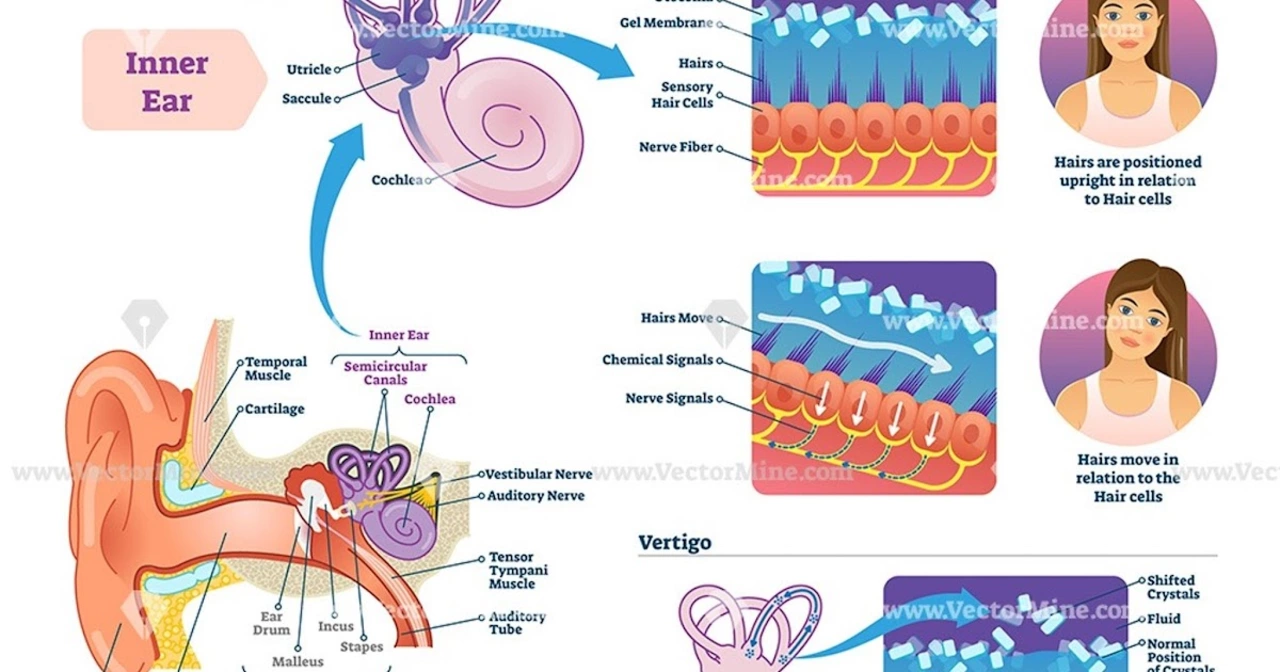If you’ve ever felt the room spin or struggled to stay steady on your feet, you’ve probably experienced vertigo. It’s more than just feeling dizzy – it’s that intense sensation that everything around you is moving. Most people think it’s a rare problem, but in reality, millions deal with it every year.
Vertigo usually comes from issues inside the inner ear or the brain pathways that control balance. Common triggers include ear infections, head injuries, and certain medications. Even simple actions like rolling over in bed can set off an episode if your inner ear is sensitive.
The first clue is the classic spinning feeling, but you might also notice nausea, sweating, or trouble focusing on objects. Some people describe it as a “floaty” sensation rather than full‑on rotation. Episodes can last seconds, minutes, or even hours, and they often worsen when you move your head quickly.
If you’re dealing with vertigo, pay attention to what makes it worse. Bright lights, loud noises, and rapid head movements are usual aggravators. Keeping a short diary of when attacks happen can help doctors pinpoint the cause later on.
While you should always get professional advice for persistent vertigo, there are a few things you can do right now to feel steadier. Sit or lie down as soon as an episode starts – staying still reduces the brain’s confusing signals.
Try the Epley maneuver if your vertigo feels linked to head position. It’s a series of gentle head movements that reposition tiny crystals in your ear. Many people find relief after just one set, but it’s best to learn the steps from a trusted video or clinician.
Stay hydrated and avoid alcohol or caffeine during an attack. Both can dehydrate you and worsen balance problems. Light snacks with a bit of protein can also help if nausea is making you feel weak.
If home tricks aren’t enough, medicines like Antivert (meclizine) are often prescribed for short‑term relief. Antivert works by calming the inner ear signals that tell your brain you’re moving. It’s a handy option when an episode interrupts work or daily life, but it can cause drowsiness, so plan accordingly.
In more serious cases, doctors might order tests such as hearing exams, MRI scans, or blood work to rule out underlying conditions like Meniere’s disease or vestibular migraines. Treatment could then include physical therapy focused on balance training, which teaches your brain new ways to interpret movement.
The bottom line is that vertigo isn’t something you have to live with forever. Simple changes at home, proper medication, and professional guidance can bring back stability fast. If episodes keep coming back or you notice hearing loss, schedule a check‑up – catching the cause early makes recovery easier.

I recently delved into the science behind vertigo, and it's fascinating how our balance system works! Our inner ear plays a crucial role in maintaining balance as it contains sensors for both linear and rotational movements. These sensors, along with our eyes and muscles, send signals to our brain, which then helps us maintain a sense of balance. However, when there's a disruption in any part of this complex system, we can experience vertigo, which can be quite an unsettling sensation. It's amazing how our body works together so seamlessly to keep us upright and steady!
View more